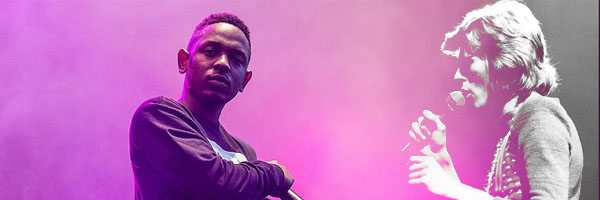Hip-Hop is so Rock ‘n’ Roll
Kendrick Lamar’s new release is a bold detour from the grooves of his last album. Whilst ‘good kid, m.A.A.d city’ was an easy-listening concept album about a day in the life of a kid in Compton, ‘To Pimp A Butterfly’ sees him tackling far more ambitious territory, changing the conversation to the costs of fame, and black consciousness at large.
He has always been known for taking the Kanye approach and subverting gangster stereotypes, as evidenced by his previous albums and mixtapes, but now he is asking serious questions of America’s black population as a whole: “2015, niggas tired of playin’ victim dawg”. His new album features fewer hooks and rappable bars, yet shows more ambition in its production, taking in free jazz, spoken word poetry, and funk as well as the typical Kendrick Lamar beats. Narratives pile up on top of each other, interweaving throughout the albums 80 minutes, surely now cementing Kendrick as a contemporary great.
The great rappers aren’t merely decent wordsmiths, or have good flow; they’re philosophers. The narrative is usually always the same. Living in an area with high levels of crime and poverty, they start trying to survive hustling (whether it’s Nas in the projects, or N.W.A. in Compton) but manage to succeed as hip-hop artists. Then the narrative switches and they reflect on their wealth and previous life. As Biggie says, “Birthdays was the worst days, now I sip champagne when I’m thirsty”. This narrative altered with Kanye and Drake. Both artists grew up in middle-class surroundings, so when they made it (despite being told they’d never make it because they didn’t fit the image of a stereotypical rapper) the reflections changed. Every rapper wants to be famous, but being famous doesn’t necessarily make you happy, and albums such as ‘My Beautiful Dark Twisted Fantasy’ and ‘Take Care’ show two artists basically at war with themselves.
Chaos or misery can easily result in great art
Kendrick Lamar is a different type of artist again from Kanye and Drake, he doesn’t smoke or drink, and unlike them he has a stronger connection to the streets. He is an inheritor of the West Coast tradition, as opposed to Kanye’s Chi-town and Drake’s Toronto, so he seems to be weighed down more by the burden of expectation. Kanye seems to have changed his tune in songs such as ‘Only One’ and recent interviews (although ‘All Day’ hints at a storm coming), but from 2008 to the end of 2013 he seemed to be in a state of extreme soul-searching, culminating in his two best albums ‘MBDTF’ and ‘Yeezus’. Drake seems to still be finding his way, ‘Take Care’, ‘Nothing Was The Same’ and ‘If You’re Reading This It’s Too Late’ constantly alternating between hilarious boasts and naked introspection – songs like ‘Marvin’s Room’ showing a man at the end of his emotional tether, whilst still showing off on tracks such as ‘Legend’. All three rappers are insanely gifted, yet terribly conflicted, making them the three great rappers of this decade (and, in Kanye’s case, last decade too). Kendrick’s new release again confirms my view that hip-hop is going through an age akin to the great conflicted solo records of the Seventies.
The 1970s was a burned-out period for a lot of people, and this resulted in the best rock albums of all time. Chaos or misery can easily result in great art, ‘Rumours’ – when Fleetwood Mac were having sad affairs with each other – being the ultimate case in point. Neil Young, who had one of the most unbelievable runs of great albums in this period, constantly shook up his aesthetic. After the orchestral stylings of ‘Harvest’, with some of his most recognisable tunes, he released ‘On The Beach’; a much darker and enigmatic record, reflecting on the death of the sixties dream. He would constantly evolve throughout the decade before culminating in his great state-of-music-itself album ‘Rust Never Sleeps’, his most accomplished achievement. David Bowie did much the same thing, moving through several different personas and genres throughout the decade, from the pop stylings of ‘Hunky Dory’ to coked-out craziness in ‘Station to Station’, reaching his own apotheosis with the brilliant ‘Heroes‘ which captured the feelings of the Cold War like no other artist before him. The best solo artists constantly evolve, capturing their most intense feelings as they reflect on their fame and influence, the same narratives also appearing in the seemingly disparate works of Lou Reed, Marvin Gaye, Curtis Mayfield and Bruce Springsteen.
Great music is always about the bigger picture
The great artists also move from the personal to the political between albums, the purging in one helping to create the other, case in point being Springsteen recording the deeply dark ‘Nebraska’ two years before the ultimate American album ‘Born in the U.S.A.’ (this is now the eighties but my point still stands). This narrative basically repeated itself between Kanye’s ‘808 and Heartbreak’ and ‘MBDTF’. These are the auteurs of personal, redemptive music, which cannot be understood in one or two albums, but throughout a discography, and this tradition is kindly followed in hip-hop by artists such as Drake, Kanye and Kendrick. Hip-hop is the new seventies/eighties Rock, and has been for the past five or so years. There will be others, members of Odd Future also embracing this personal aesthetic over the formally compelling yet sort-of-empty albums by A$AP Rocky, and the now-irrelevant Jay-Z and Eminem. So even if you don’t think Kendrick’s latest album is as fun as his last one, remember that he’s on a terrible exciting journey, and I for one can’t wait for what he or his other contemporaries will do next. Great music is always about the bigger picture.

Comments